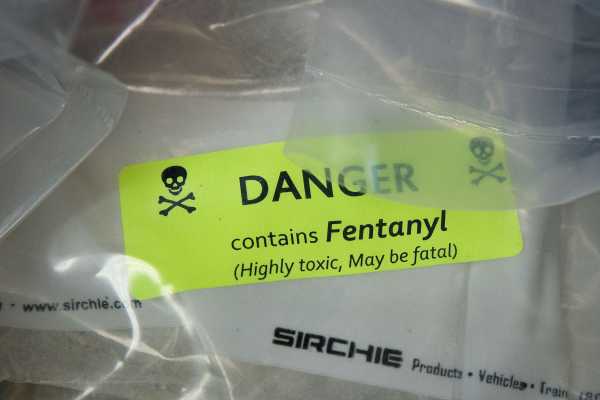
The latest horror story in America’s opioid epidemic: Police officers are supposedly overdosing just by coming in contact with the synthetic opioid fentanyl. In the most recent example, a Vermont state trooper, acting Sgt. Brett Flansburg, last week reportedly fell ill and collapsed in a parking lot after he was exposed to small quantities of a drug.
This isn’t the first time a similar story has been widely reported. This genre of stories really took off with national reports that an East Liverpool, Ohio, police officer collapsed after he brushed fentanyl residue off his uniform. And there have been similar reports in California, Massachusetts, Michigan, and Pennsylvania.
But there’s one problem: Overdosing on fentanyl just by touching it or by simply being in proximity to it is extremely unlikely, if not impossible. Yet overdose by contact has been a persistent myth about fentanyl since it began supplanting heroin in much of the US’s illicit opioid supply.
Still, these stories and the myth they perpetuate really matter. They suggest that helping people who use drugs can be dangerous. That can lead to unnecessary caution or new requirements, like forcing officers to put on certain equipment when they respond to an overdose — which could then lead to people in need of quick, unhesitating emergency help getting hurt or killed as they wait.
Fentanyl is dangerous, but touching it won’t kill you
Fentanyl is a dangerous drug. It’s up to 100 times as potent as morphine, and several times as potent as heroin. It’s often mixed with or sold as heroin — which means a person using the drugs can inadvertently take a much more powerful dose than he was expecting. It’s a big reason drug overdose deaths have skyrocketed in the past few years, with overdose deaths linked to fentanyl and other synthetic opioids (excluding methadone) spiking more than 10 times over since 2011.
But fentanyl is only dangerous when it’s genuinely ingested — by snorting it or injecting it into the bloodstream. The American College of Medical Toxicology published a position statement noting as much in 2017, finding that “it is very unlikely that small, unintentional skin exposures to tablets or powder would cause significant opioid toxicity, and if toxicity were to occur it would not develop rapidly, allowing time for removal.”
Maia Szalavitz also reported on this myth for Tonic, citing medical experts:
If that doesn’t convince you, Chad Sabora, a harm reduction activist in St. Louis, posted a video holding heroin cut with fentanyl and carfentanil (a more potent synthetic opioid). As you can see, he’s fine:
A common theme in these stories is that police officers couldn’t be revived after multiple doses of the opioid overdose antidote naloxone — typically as a way of suggesting just how bad the overdose was.
But there’s another possibility: Maybe the person couldn’t be revived by naloxone because he wasn’t experiencing an opioid overdose. Naloxone can, in some cases, require several doses to take effect, but it will eventually work; if it doesn’t, then it’s likely not an opioid overdose.
Why the fentanyl myth is dangerous
So what’s going on with these cops? It’s hard to say, and no one knows for certain. One possibility is panic attacks. With the media widely reporting just how dangerous fentanyl and other synthetic opioids are, maybe some cops have convinced themselves that the drug really can cause an overdose if you touch it, so they panic — essentially, a nocebo effect. If this is true, the spread of this myth could hurt more cops by potentially exposing them to unnecessary panic.
The good news is so far, there have been no reports of police officers dying due to these encounters.
This myth, however, can be dangerous. If they believe this myth, emergency response services may be motivated to require safety equipment for staff responding to an overdose — gloves, masks, hazmat suits, and so on. But when responding to an overdose, every second matters. Reversing an overdose just a few seconds or minutes earlier can prevent brain damage or death.
So requiring emergency crews to take seconds or minutes to put on unnecessary gear could put some overdose victims in actual danger — and then somebody might actually die of an overdose.
For more on fentanyl, read Vox’s explainer.
Sourse: vox.com






